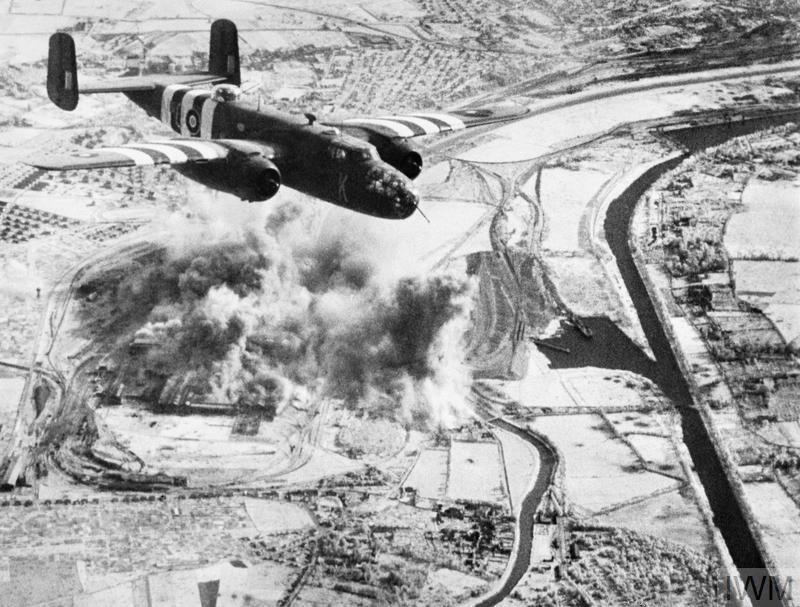Like Caen, Colombelles had to be captured on the evening of 6 June 1944 by the British 3rd Infantry Division. This however was not the case, and it remained under German control.
Colombelles was situated to the south of the positions of the British 6th Airborne Division’s perimeter to the eastern side of the river Orne. It is in this town east of Caen, that a steel factory, the SMN (Société Métallurgique de Normandie) was situated. It had high chimneys that served as an observatory for the German forces from D-Day onwards.
In the following weeks and on a static front, Colombelles was subjected to regular bombardment and the village was gradually evacuated by the German forces. After several weeks of air attacks and heavy artillery fire, the factory was nothing more than a vast field of ruin.
As a prelude to Operation Goodwood, which was to widen the narrow bridgehead to the south of Caen and project the Anglo-Canadians towards Falaise, the Canadian 3rd Infantry Division launched Operation Atlantic. The objective of this was to liberate the southern half of Caen.
An intense bombardment fell on the German positions, on the SMN plateau and on Colombelles at 06:00 on 17 July. 5,000 tonnes of bombs were dropped by a thousand bombers made up of RAF Lancaster and Halifax aircraft. This would be the front line between Colombelles-Mondeville-Giberville. This was the starting point of the corridor through which the British armoured Divisions (tanks) would push through.
One hour later, the units of the Canadian Infantry units attacked Colombelles: the Queen’s Own Rifles of Canada on the left flank, the Regiment de la Chaudière along the Orne, the North Shore Regiment in the centre.
The German 16th Luftwaffe Feld-Division offered strong resistance for the control of the factory of the SMN and its blast furnaces. At the Château de Colombelles, the enemy repelled the assaults of the Régiment de la Chaudière. A large number of Allied bombs fell on the castle to force the enemy from their positions.
At 17:00, Colombelles was in the hands of the Canadian forces while the fighting of the North Shore Regiment continued on the perimeter of the factory. On 19 July, Colombelles was completely liberated from German occupation, 80% of the area and buildings had been destroyed.
The inhabitants who, since 6 June 1944 had taken refuge and hidden in the underground quarries of Mondeville and Colombelles could finally leave after the end of the bombardments and fighting.
